Original URL: https://www.theregister.com/2009/02/03/review_mobile_phone_sony_ericsson_j132_lg_kp100/
Sony Ericsson J132 vs LG KP100
Ultra-budget handset head-to-head
Posted in Personal Tech, 3rd February 2009 13:02 GMT
Review While there's nothing like an economic downturn to focus the mind on affordable technology, it gets beaten every time by a pretty girl walking into Reg Hardware's office and asking which is the best bargain mobile phone to buy as a holiday handset. One embarrassing silence, several blank stares and some muttering later we decided we best find out.
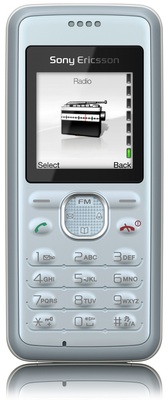
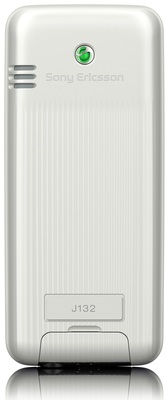
Sony Ericsson's J132: the best keypad of the pair
We've chosen the Sony Ericsson J132 and LG KP100 because both arrived in the UK late last year and if you shop around you can find both for under a tenner on PAYG deals.
Laid side by side, there's not a lot to chose between the two. The 76g, 103 x 45 x 15.3mm J132 being marginally heavier and thicker than the 65g, 99 x 45.5 x 13mm LG. The LG looks the more funky of the two, thanks to its sleek silver casing and stylish keypad.
Technically speaking, there is also barely a cigarette paper between the two. Both are dual-band 900/1800 GSM devices; sport 1.5in, 128 x 128 basic colour screen; and pack similarly sized batteries: 930mAh in the J132, 900mAh in the LG.
Keyboard layout is broadly similar too, with both sporting a central navigation pad flanked by answer/hang up and menu keys. The Sony's navpad, though unilluminated, includes handy icons at the compass points to let you know what does what. The LG depends on a tiny on-screen graphic to do the same job but it's so small as to be illegible.
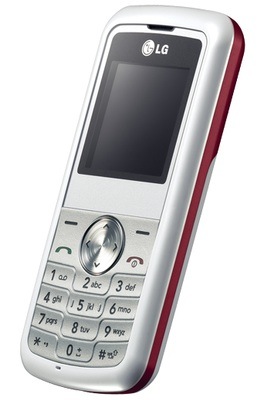
LG's KP100: the best looking
At the bottom of the J132, you'll find a mini USB port for charging and a 3.5mm headphones jack – an amazing thing to see on a Sony Ericsson - so you can listen to the radio on your own 'phones. The KP100's charge/audio port is LG's usual proprietary connector.
Aesthetics notwithstanding, it's the J132's cheap-looking keypad with its raised rather than recessed buttons - as the LG has - that proves the easiest and most pleasant to use, making it the device of choice among the two handsets for SMS junkies. The Sony Ericsson's navpad is also the easier of the two to use due to its more pronounced rim.
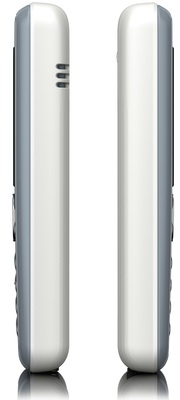
Cheap looking
When it comes to voice call quality, though, it's the LG that claims the honours, both incoming and outgoing calls sounding clearer, louder and more natural in tone than they do on the Sony Ericsson, which sounded a little muted on incoming calls and was prone to break-up on outgoing ones.
Neither handset has a screen that you'll want to look at for any length of time if you value your eyesight, and both phones will only let you choose between a limited selection of garish wallpapers – why you can't select plain white or black is anyone's guess.
Of the two, the J132's UI is the better simply because its home screen text is both larger and rendered in white rather than black-with-a-white-surround, making it easier on the eye.
The Sony also has the bigger - and better - battery gauge, the LG showing only three charge gradations to the Sony's ten.

Thinner and lighter than the J132
The only significant functional difference between the two handsets is the presence of a rather excellent RDS FM radio in the J132. A handy side-effect of this is that the Sony also comes supplied with a hands-free headset. The cheapest LG compatible headset we could find was a couple of quid more than the cost of the phone itself.
Both handsets come with the usual raft of tools including a calculator, calender, stopwatch and alarm clock, though only the LG has a repeating alarm - the J132's alarm needs to be re-set after every use.
LG also gives you rather handy world clock and unit convertor applications, which Sony Ericsson counters with a torch function. What this actually means is that when activated the screen lights up at its maximum, pure white, brightness. In actual usage, the 'torch' throws out only a little more illumination than you get simply bringing the phone off standby, so it's arguably no more a feature than the screen on any other phone is.
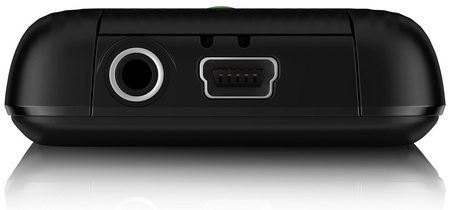
The J132 uses standard USB and 3.5mm-audio ports
Both handsets come with T9 predictive text but only the LG allows you to add new words to its dictionary. Though the J132's “writing tips” say you can do this too, the “spell” function was simply missing from the relevant menu on our handset.
Sony Ericsson claims 450 hours on stand-by and up to nine hours of talk time, while LG's equivalent quoted numbers are 420 hours and 6.5. hours, respectively. The bottom line is that both handsets will go a full week between charges unless heavily used and abused - handy for a holiday phone for which you may want to leave your charger at home.
Should you use the handset frequently, the presence of a USB charge socket on the J132 means you can charge your phone from a computer as well as the mains adaptor, which is a feature not to be sniffed at. On the other hand, when you remove the battery from the LG to swap SIM cards it remembers the time and date - unlike the Sony, which does a Pol Pot and reverts to Year Zero.
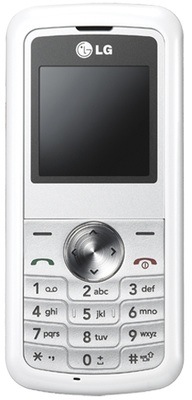
Cheap as chips
At the time of writing, both the J132 and KP100 are available as PAYG handsets - both locked, alas - from T-Mobile, for instance, for the princely sum of £9.78, and that includes post and packaging.
Verdict
Frankly, any phone that comes with change from a Charles Darwin and actually works is a good deal. Of the two handsets, the LG was the better looking, smaller and lighter, though the Sony proved to be the easier to use and live with, and comes with a radio and hands-free headset. On balance we will go for the LG because of the superior call quality. ®